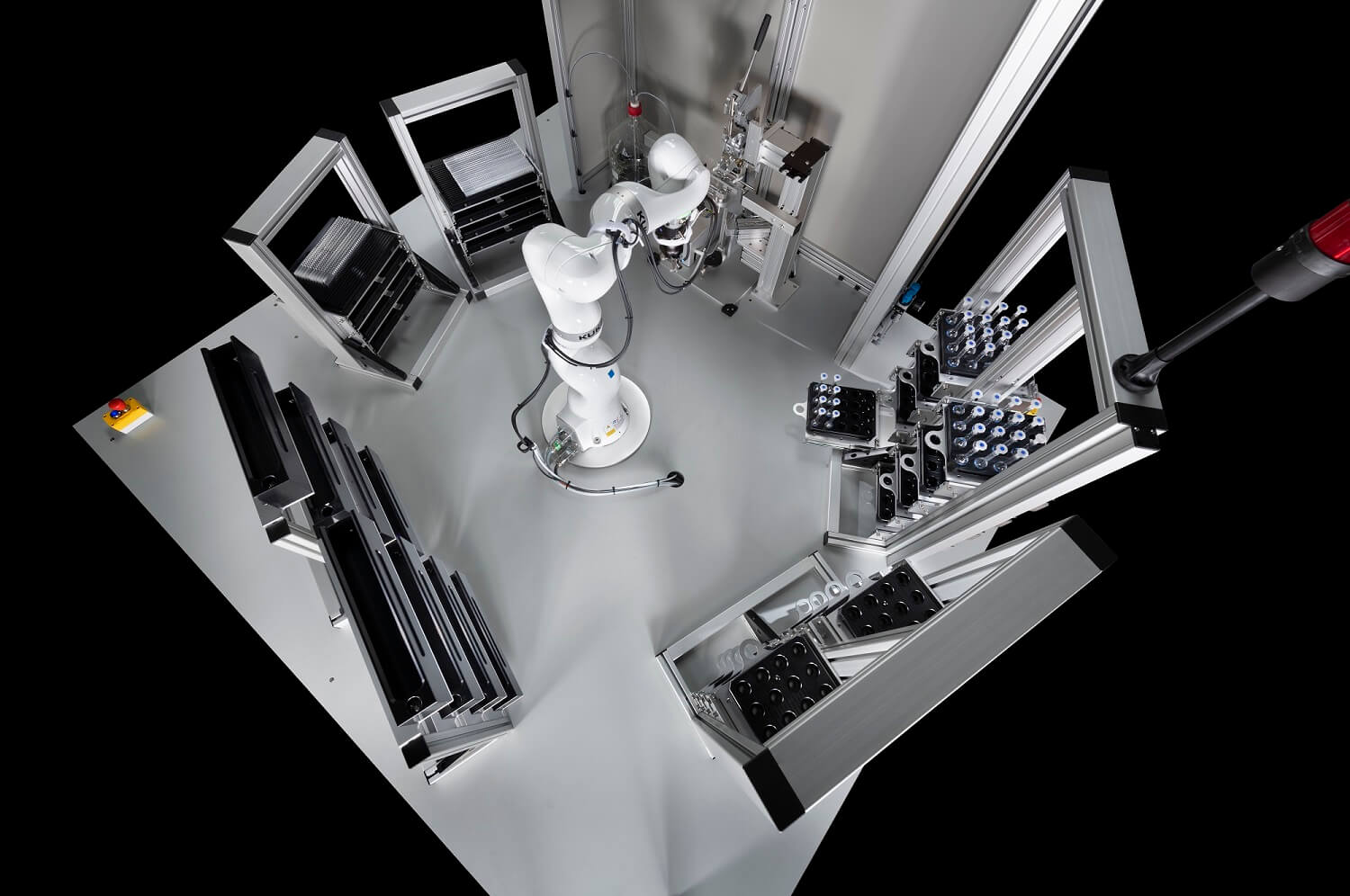A guide to types of collaborative robot

Share this article
Collaborative robots are leading the way to creating cohesively collaborative workflows between industrial robots and humans, making safer, highly efficient work spaces that have a significantly better output. Cobot types are dictated by the ISO 10218 standard, which is an international standard developed in 2011 that focuses on the safety of industrial robots. Below, we’ll outline each type of cobot and its uses.
Cobot types as determined by the ISO 10218 standard
ISO 10218 does not provide strict categorisation for types of cobot, but it does provide a framework for safety.
This is utilised by manufacturers to design industrial cobots which fall into four main categories:
- Safety Monitored Stop
- Speed and Separation
- Power and Force Limiting
- Hand-Guided*
*Please note: Hand guided robots are often referenced as a cobot type, but they aren’t officially defined as one.
Cobots can have features from multiple categories, but the ISO 10218 standard helps to ensure manufacturers can achieve safe designs by meeting the standards performance requirements.
At Astech, we source collaborative robots from trusted partners and integrate them into products and systems, programming them to complete tasks that will enhance productivity. Understanding cobot standards is crucial to ensuring the correct machine is selected for each environment. Below, we go into more detail about the ISO 10218 cobot types, and ways that they can be utilised to improve workflows.
1) Power and Force Limiting Cobots
PFL (Power and Force Limiting) cobots are engineered to limit the amount of power and force they can exert, which means the safety of human workers is prioritised within their collaborative spaces.
Being able to work within close proximity of the cobots makes them ideal for busy manufacturing facilities where they can be utilised for assembly, material handling, production lines, and machine tending.
Tasks these cobots can complete:
- Welding
- Palletising
- Picking and packing
- Assembly line tasks
- Machine tending
- Packing & fulfilment
- Lab testing
2) Safety Monitored Stop Cobots
This type of cobot prioritises safety by ceasing operation completely when a human worker enters their space, and then continues when they leave it. Although one of the main benefits of cobots is that they can work alongside humans, these types of cobots are best suited to environments where human to robot interaction is minimal.
Continuous collaboration isn’t possible with this type of cobot, but their stopping features mean they are well suited to scenarios that require some or no human involvement. For example, a task like glueing that requires a human to remove one product and replace it with another before it continues; or loading parts into a CNC machine, waiting for the process to come to an end, and then unloading.
Tasks these cobots can complete:
- Machine tending
- Material transfer
- Glueing
- Loading
- Dispensing materials
3) Speed and Separation Cobots
As defined by clause 5.10.4 of the ISO 10218 standard, cobots that fall under the speed and separation category prioritise safety by maintaining a determined speed and separation distance from the operator.
If a worker approaches the cobot, it won’t stop immediately, but will slow down and come to a gradual halt. If their buffer zone remains clear, they operate at full speed. This makes them ideal for transporting materials across a work area, and completing tasks like loading and unloading.
Tasks these cobots can complete:
- Welding
- Assembly line tasks
- Quality control (inspection)
- Machine tending
- Packing & fulfilment
- Lab testing
4) Hand Guided Cobots
Hand guided cobots are not explicitly defined as a cobot type in the ISO 10218, but they combine aspects of Speed and Separation, and Power and Force Limiting cobot types.
This type of cobot benefits from learning by led through teaching, meaning it can be guided through its desired path or scenario by a human physically moving its arm/s. This teaches the path to the cobot, which can then repeat it. Whilst it performs tasks, a human operator can make adjustments as needed.
These cobots are suitable for tasks that require human oversight to position them and their arms correctly. These tasks are generally more delicate, like polishing, finishing, and assembly, or they are conducted in tight, awkward spaces.
Tasks these cobots can complete:
- Polishing and finishing,
- Assembly tasks,
- Handling material in tight and awkward spaces
Find out about Astech’s RAMP / Cobots

At Astech, we specialise in the integration of cobots, with decades of experience in delivering cutting edge collaborative technology to assist within industrial, laboratory, and manufacturing spaces. RAMP / Cobots represent the next evolution in collaborative automation, and we’re constantly innovating ways to put the technology to work.
Interested in how you could utilise collaborative robots for a future-focused workflow? Get in touch with the Astech team.
FAQ
What’s the difference between a robot and a cobot?
A cobot is designed to work collaboratively with humans. Per ISO 10218 standards, they have integrated mechanisms that mean they are safe to work alongside - such as sensors and cameras that will slow them down or stop them, and maximum force limits for their arms and other mechanisms. Their external design is also considered, with smooth edges and softer materials used, and the joints of arms/manipulators not having pinch points.
Industrial robots, however, aren’t designed with human safety in mind as they are constructed to operate individually within a barrier. They have sharp corners, much higher force limits, and machinery will not stop if a human enters their zone (unless appropriate mechanisms have been set up for this purpose).
Read more about what cobots are and how they can help elevate your workflow.


